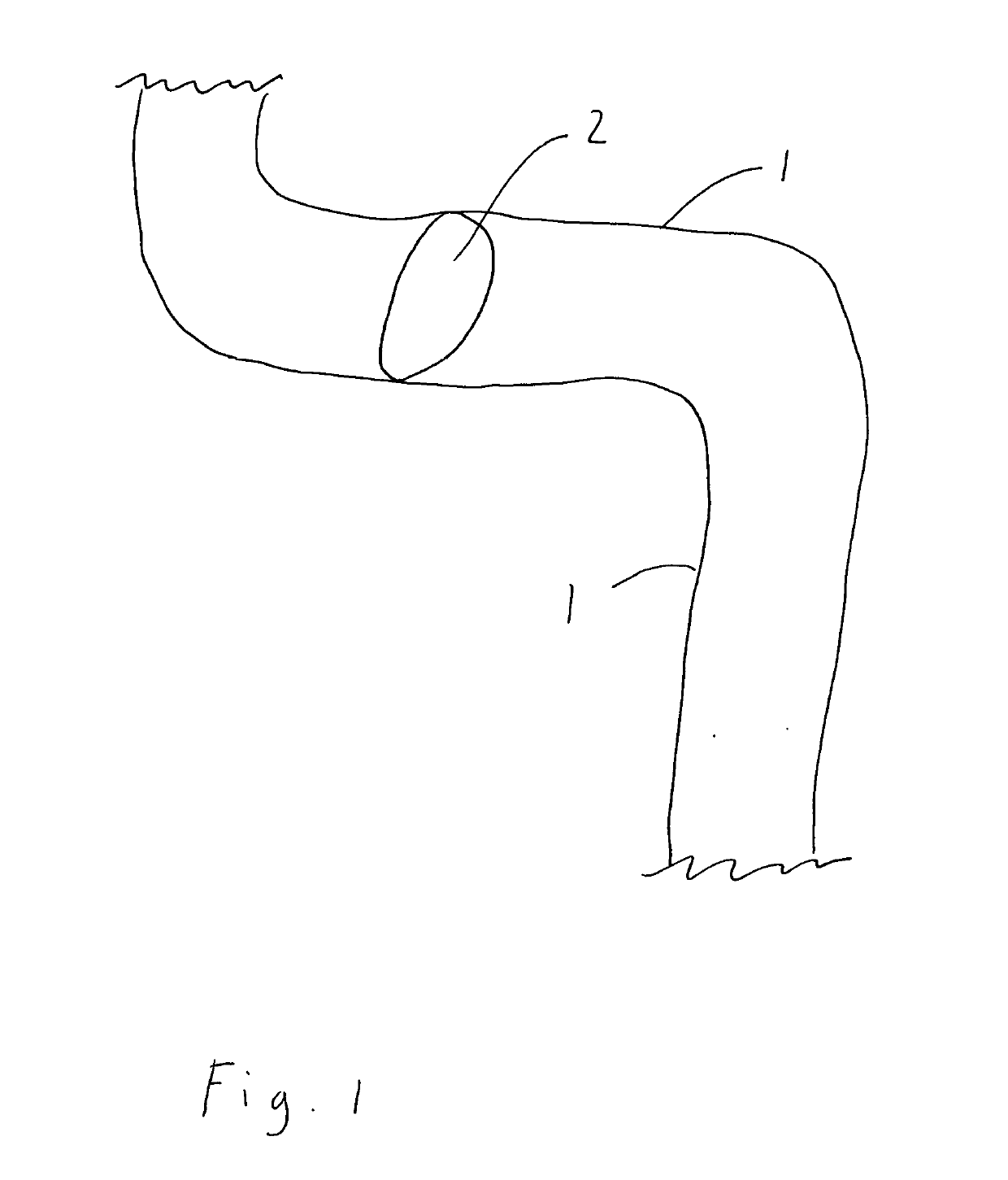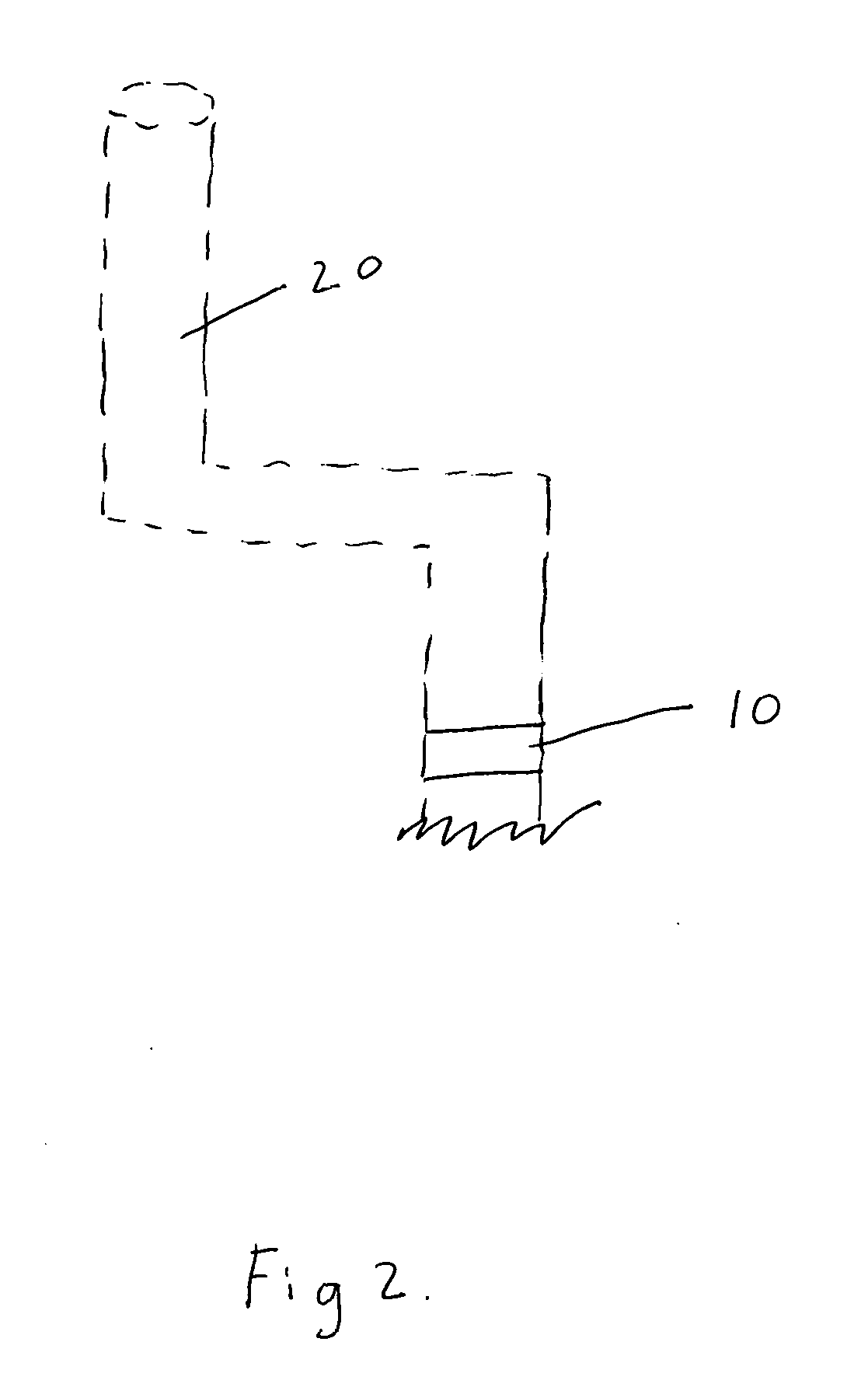Bulging Torus Balloon
a balloon and torus technology, applied in the field of balloons, can solve the problems of affecting the flow of blood to other sites near the targeted site, requiring multiple operations, injury to said other sites or requiring multiple operations, etc., to avoid ischemic injury, relieve such heart strain, and remove or dissolve clots in a short time.
- Summary
- Abstract
- Description
- Claims
- Application Information
AI Technical Summary
Benefits of technology
Problems solved by technology
Method used
Image
Examples
Embodiment Construction
[0020]The present invention is composed of a temporarily bulging torus shaped bypass balloon 10 comprising two passages. One passage further comprises a port.
[0021]The outer diameter of said balloon is 0.001 cm-30 cm. The inner diameter of said balloon element is 0.0001 cm-29 cm.
[0022]The present invention is capable of inflating and deflating prior to deployment within a vessel wall 1. Referring to FIG. 2, the bulging torus-shaped balloon 10 of the current invention is depicted in a deflated state disposed upon delivery catheter 20 (shown with dotted lines as not part of the invention).
[0023]FIG. 3 depicts the bulging torus-shaped balloon 10 in a fully inflated, deployed state disposed upon delivery catheter 20 (shown with dotted lines). Second passage 1200 allows the delivery device 20 to pass therethrough. First passage 1100 allows for blood to flow through the center of the present invention. Port 1210 within second passage 1200, more particularly on second passage interior wall...
PUM
 Login to View More
Login to View More Abstract
Description
Claims
Application Information
 Login to View More
Login to View More - R&D
- Intellectual Property
- Life Sciences
- Materials
- Tech Scout
- Unparalleled Data Quality
- Higher Quality Content
- 60% Fewer Hallucinations
Browse by: Latest US Patents, China's latest patents, Technical Efficacy Thesaurus, Application Domain, Technology Topic, Popular Technical Reports.
© 2025 PatSnap. All rights reserved.Legal|Privacy policy|Modern Slavery Act Transparency Statement|Sitemap|About US| Contact US: help@patsnap.com



